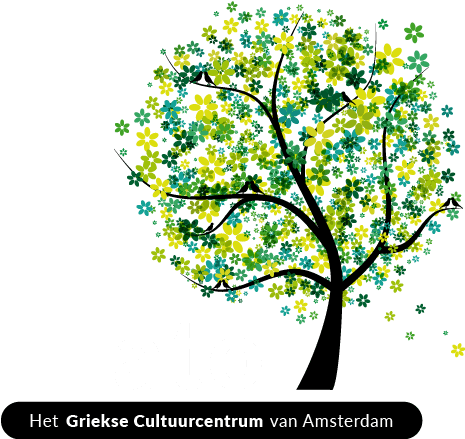No products in the basket.
The Christmas Tree Story
One of the most famous Christmas traditions is the Christmas tree. Since the 20th century, it has become very popular in many city centres and stores.
But how did the Christmas tree arrive till today?
When and how its long history began?

According to some researchers, the tradition of decorating trees or pieces of trees existed in many different religions since antiquity.
The trees were brought inside the houses and people used to decorate them in order to ensure a good harvest for the new year. Also, plants and trees, which remain green all year round, were considered of big importance during the winter. People were hanging evergreens above their doors and windows because they believed that they kept away witches, ghosts, evil spirits and illnesses.
Τhe evergreen trees and the worship of the Sun.
Many also believed that the sun was a god and that winter was coming every year because the god Sun had become sick and weak. That’s why they celebrated the solstice because it brought the hope that Sun would be well soon. The winter solstice, the shortest day and the longest night of the year, takes place on the 21st to 22nd December. The evergreen branches reminded people of all the plants that will grow anew when the sun becomes strong during spring and summer.
The ancient Egyptians worshipped the god Ra as the deity of the Sun. During the solstice -21st to 22nd December – the Egyptians filled their homes with palm branches, which symbolized the triumph of life on death.
In northern Europe, the mysterious Druids, priests of the ancient Celts, decorated their temples with evergreen branches as symbols of eternal life. And Vikings in Scandinavia believed that evergreen plants were the favorite ones of the god sun.
The ancient Romans celebrated the solstice with Saturnalia, having the knowledge that the solstice meant that soon all farms and orchards would become green and fertile again. To celebrate the event, they decorated their homes and their temples with evergreens.
According to testimonies from the 4th century AD (336AD), Rome set December 25th as the Christmas Day and at the same time as the first day of the year. Thus, as a sign of celebration, the Romans decorated in Saturnalia the branches or trees they had at their homes with candles and other ornaments (possibly walnuts, edibles, etc.).
The Christmas Tree

The beginning of the custom of the Christmas tree as we know it today is placed in the early 8th century. A.D. and has its roots in Germany.
The legend says that in the early 16th century, Germany combined two different customs. The first was “the tree of Paradise”, a fir tree decorated with apples, symbolizing the Tree of Knowledge in the Garden of Eden. The second custom was the “Christmas Light”, a small pyramid frame decorated with glass balls, golden paper and a candle on the top, as a symbol of the birth of Christ.
Devoted Christians put decorated trees in their homes, changing the apples with balls made of golden paper. With the Light (=candle) placed on the top, they created the tree we know today.
Over the centuries the symbolism of the Christmas tree has been redefined many times and began to be filled with small items of everyday use that over the years replaced by decorative objects.
Christmas Tree and colourful lights.
The colorful lights that we use today came to replace the candles people used before.
Martin Luther in the 16th century is said to be the first to put more candles on the tree. They say that as he was on his way to his house, a winter night, he admired the shining of the stars through the trees. In an effort to bring this scene to life again, he set up a tree in the central room of his house and hung candles in it.
Of course, this fact created many accidents and most of the people used to keep a bucket of water next to the tree, in case of fire.
The first Christmas tree with electric lights was decorated in New York in 1882 by Edward Johnson, a colleague of Thomas Edison, the inventor of the electric lamp.
The tradition of Christmas Tree in Greece.
In modern Greece, the Christmas tree arrived with the Bavarians. In 1833 the first tree was decorated in Nafplion at the palace of King Otto. The next year also one more was decorated in Athens, as the residents admired the new idea. After the end of the second World War, almost all country houses were decorated with Christmas trees.
Christmas Tree or Christmas Ship?
Nowadays there are many Greeks who believe that the Christmas tree is a “foreign custom” since in Greece people traditionally used to decorate their homes with ships. The ship was a symbol of separation and is connected with the way that Greek expatriates left their homes, their families and their country.
The Christmas tree, on the other hand, is a symbol of unity according to the custom we sit around it and we talk. Moreover, the tree symbolizes the source of life, inspiration, creation. The roots of the tree symbolize our past experiences, the foundations which keep us alive and allow us to continue in the battle for survival.
For all these reasons the symbolism of a Christmas tree seems to suit the spirit and the mood of the days more. In addition, we must not forget that in many countries of the Eastern the Mediterranean an evergreen or a healthy green tree was connected with good fortune. Since antiquity, there were habits in Greece such as “Iketirides” or “Irisiones”, which were very similar to the one of the Christmas tree.
Today, more than 72 million trees are decorated every Christmas throughout the world. Almost half of these are real trees.
© Lato,
Het Griekse Taal– & CultuurCentrum van Amsterdam



